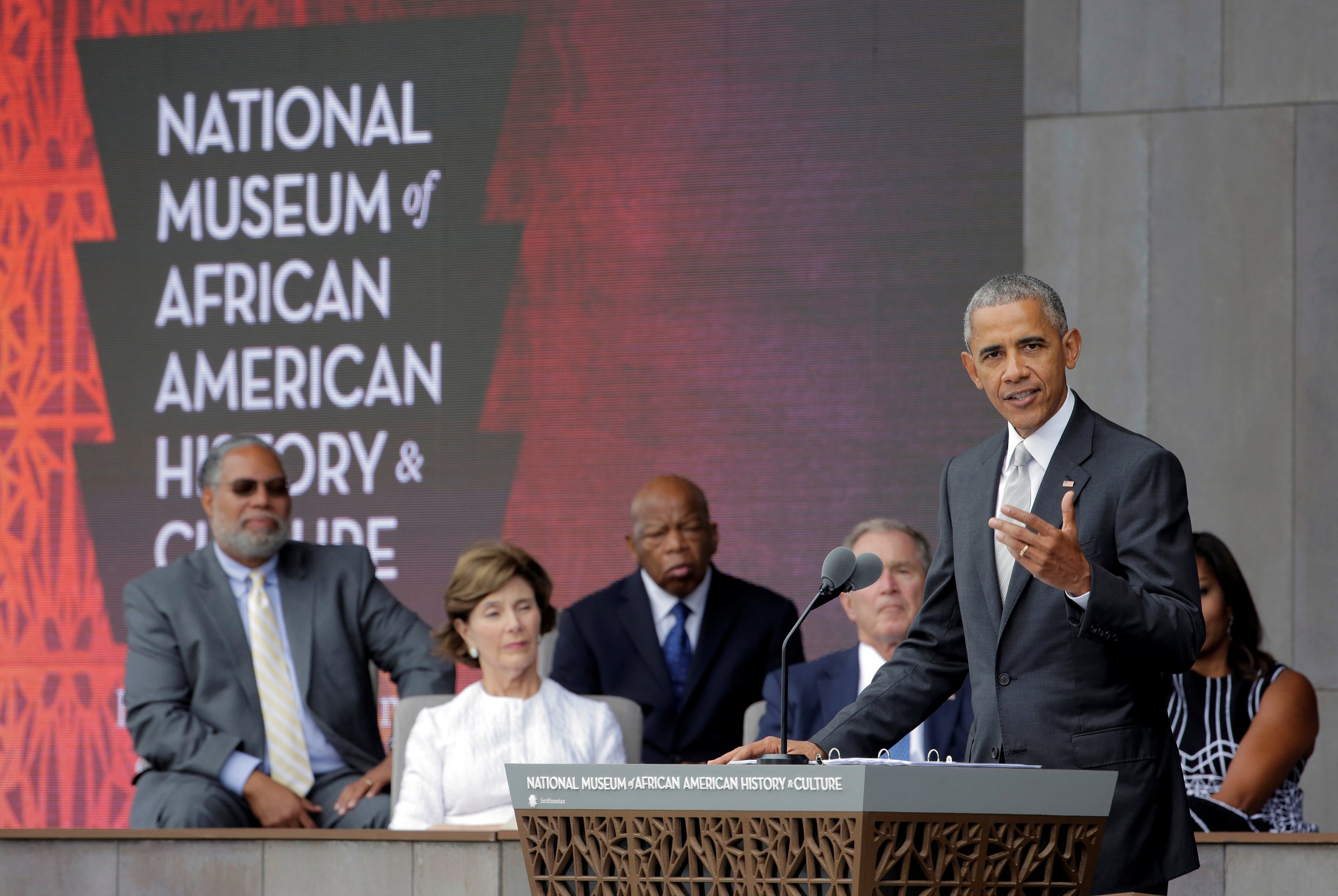You stand before a bronze-clad building, its façade etched with stories of resilience, artistry, and triumph. This is not just a museum; it’s a monument to the unwavering spirit of African Americans. It is the National Museum of African American History and Culture, a beacon of truth and inspiration on the National Mall in Washington, D.C.

Image: www.pinterest.com
Since its grand opening in 2016, the museum has captivated the world, welcoming millions of visitors eager to delve into the rich tapestry of Black history and culture. The museum’s mission is clear: to tell the complete and unvarnished history of African Americans, from the horrors of slavery to the heights of artistic and intellectual achievement. To understand the present, we must first understand the past, and this museum provides a vital platform for understanding the complexities and triumphs of the African American experience.
From Roots to Revolution: A Timeline of Black History
The museum’s journey begins in the depths of the transatlantic slave trade, a harrowing chapter that reshaped the very fabric of American society. Visitors are confronted with the stark realities of slavery, the inhumane conditions, and the unwavering will of enslaved Africans to resist and survive. Artifacts from slave ships, tools used in the fields, and personal accounts of resistance paint a sobering picture of this brutal period.
The Seeds of Struggle and Hope
As the narrative unfolds, we witness the emergence of groundbreaking figures who defied the odds and paved the way for future generations. The museum pays tribute to the abolitionist movement, highlighting the tireless efforts of Frederick Douglass, Harriet Tubman, and countless others who fought relentlessly for freedom and equality. The Underground Railroad, a clandestine network of safe houses and courageous individuals, is depicted in detail, showcasing the bravery and ingenuity of those who navigated the perilous journey to freedom.
The Era of Reconstruction and Jim Crow
The post-Civil War era saw a flicker of hope, with the promise of emancipation and equal rights for all. However, the era of Reconstruction was short-lived, giving way to the oppressive system of Jim Crow laws that enforced segregation and perpetuated racial discrimination. These dark days are poignantly portrayed through photographs, documents, and firsthand accounts, offering a chilling reminder of the challenges faced by African Americans in the fight for civil rights.

Image: www.newsweek.com
The Fight for Equality: A Long and Winding Road
The museum’s timeline then takes us through the 20th century, a period marked by both deep struggles and remarkable progress in the fight for equality. The Jim Crow South is meticulously documented, revealing the brutal realities of lynching, disenfranchisement, and the constant threat of violence. Yet amidst the darkness, a spirit of resistance and hope emerged – the Civil Rights Movement.
Celebrating Artistic and Intellectual Flourishing
Beyond the struggles for equality, the museum sheds light on the extraordinary achievements of African Americans in various fields: art, music, literature, science, and more. Visitors can immerse themselves in the vibrant world of jazz, blues, and gospel music, tracing their roots and evolution. The museum showcases the groundbreaking contributions of African American artists, writers, and scientists, challenging the narrative of American history that often overlooks their contributions.
Beyond Exhibits: Experiencing the Museum’s Power
The National Museum of African American History and Culture is more than just a collection of exhibits; it’s a living, breathing testament to the enduring power of the Black experience. The museum’s design itself is a feat of architectural ingenuity, inspired by the intricate patterns found in traditional African crowns. The building itself is a symbol of resilience and a testament to the ability of African Americans to transform adversity into artistic expression.
A Platform for Dialogue and Understanding
The museum’s impact extends far beyond its physical walls. It serves as a platform for dialogue, fostering understanding and empathy among diverse audiences. The museum engages with the community through educational programs, public lectures, and exhibits that highlight current social issues. It aims to ignite conversations about race, inequality, and social justice, encouraging a deeper understanding of the ongoing struggles and triumphs of the African American community.
The Importance of the Museum: A Legacy for Future Generations
The National Museum of African American History and Culture stands as a testament to the power of preserving history and honoring the contributions of marginalized communities. The museum’s impact is felt both locally and globally, inspiring generations to learn, connect, and engage with the complex and multifaceted narratives of Black history. It is a place where the past and present converge, where stories of struggle and resilience are brought to life, and where the future of understanding and equality is envisioned.
African American Museum Of History And Culture
A Call to Action: Honoring the Legacy
The National Museum of African American History and Culture is a gift to humanity, a place where we can learn from the past, celebrate the present, and envision a future where equality and justice prevail. As you navigate the museum’s hallways, let the stories of courage, creativity, and perseverance resonate within you. Share these stories with others, and let the museum’s message of hope and understanding guide your own journey towards a more just and equitable world.






